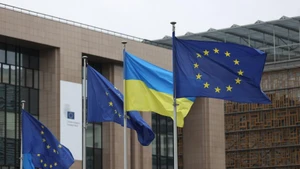In the largest economy in Southeast Asia, Indonesia, the inflation rate during the first six months of this year reached 4.35% compared to the same period last year, the fastest speed over the past 5 years, far exceeding its target of 2-4%. The Indonesian Government had to impose a ban on the exports of palm oil from the end of April, in the context of the world's leading palm oil producer facing a shortage of cooking oil supply and escalating prices.
In some cities, people had to wait for hours in front of distribution centres to purchase subsidised essential goods. Rising prices also prompted the Indonesian parliament to approve the Government's request to boost energy subsidies by about 23.8 billion USD towards stabilisation of energy prices in May.
Meanwhile, inflation in the Philippines was reported at 4.4% in the first half of 2022, higher than the 2-4% target set forth. In June only, the country recorded the highest inflation rate in nearly four years at 6.1%. The Philippine Government said it is looking to strike import deals with some of the world's biggest fertiliser suppliers, including China and Russia, to help lower costs and increase food production amid high inflation.
Agricultural officials warned that the prices of domestic rice, which is the country's major food, will increase in the coming months. This is partly due to rising fertiliser costs, supply disruptions due to the Russia-Ukraine conflict, and the high costs of some food items.
Another major Southeast Asian economy, Malaysia, also witnessed a sharp increase in inflation. The inflation rate, as measured by the consumer price index, rose by 3.4% in June from a year ago, mainly due to higher food prices.
Malaysia has spent a subsidy of 17.6 billion USD to stabilise the prices of necessities such as chicken, eggs, cooking oil, water, petrol and electricity, said PM Ismail Sabri Yaakob.
The latest figures from the Department of Statistics Malaysia (DOSM) showed that the above increase has exceeded the average inflation rate of 1.9% in the period between January 2011 and June 2022. According to DOSM, the food price index increased by 6.1% and remained the main factor contributing to the rise of inflation in June. Prime Minister Ismail Sabri Yaakob has affirmed that the government will seek measures to deal with the rising prices of commodities.
Singapore, the neighbour of Malaysia, also recorded an increase in inflation, while economic growth slowed. The country’s central bank noted that the core inflation rate in May hit its highest level at a 13-year high of 3.6%.
Meanwhile, Singapore’s manufacturing output shrank for the third straight month in the first quarter, mainly due to the impact of the conflict between Russia and Ukraine, which drove up prices and disrupted the supplies of energy and industrial metals worldwide.
In Thailand, inflationary pressures have also increased over the past year, with the headline inflation rate hitting 7.61% in July, staying near June's 14-year high of 7.66%. That has forced the Ministry of Commerce to revise its 2022 average inflation forecast, to between 5.5% and 6.5% in July, from the previous 4-5%. Meanwhile, the Bank of Thailand (BoT) maintained its annual inflation projection at 6.2%. In early August, the BoT raised its prime interest rate for the first time in nearly four years, to combat inflation amid an economic recovery.
Inflation is becoming the biggest economic challenge in 2022 for Southeast Asian economies. Meanwhile, the World Bank (WB) forecasted that global food prices will increase by 22.8% this year. Researchers at Fitch Solutions said this year's Brent oil price could average 105 USD per barrel during 2022 and the “ghost of recession" continues to threaten the global economy. In the above context, the recovery of the Southeast Asian economies is facing many difficulties. The countries may be forced to increase spending to reduce the negative impact of inflation that caused budget deficits and the risk of increased macro imbalances.
















